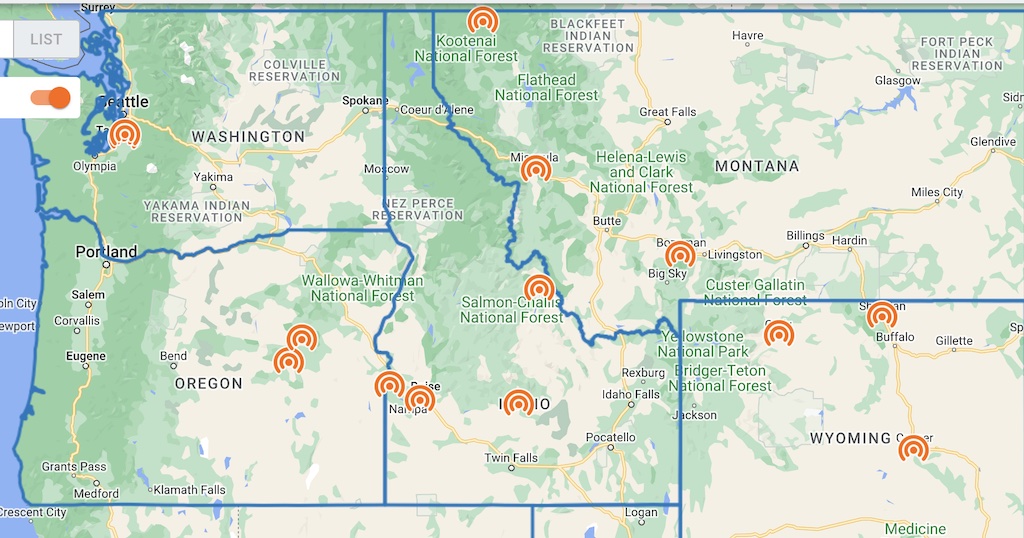Craig Settles: There’s a TAP for That!
Through Telehealth Access Points, we can consider broadband and telehealth as the double-edged sword of digital health.
Craig Settles

By one estimate, there are over 400,000 healthcare-related apps at the App Store. But what’s a Telehealth Access Point?
TAPs are self-contained spaces that are furnished with an internet connection, a computing device equipped with a camera, speaker and microphone, and a dedicated private room or kiosk open to the general public. It is telehealth broken down to its essential elements.
A TAP could be a blessing if a person having a mental health crisis needs a safe place. Rural residents can find TAPs are low-pressure environments to try out telehealth. TAPs at trusted places such as barbershops, hairdressers, or churches are places to go for appointments when people don’t have Internet accounts, laptops or their smart phone is data-capped out.
“The Find Telehealth app located at our webssite is a tool that helps people find TAPs if they need them, and the app will help these established TAPs become better utilized by their communities,” said Jaleen Johnson, program manager for the Northwest Regional Telehealth Resource Center and the Utah Education and Telehealth Network. “TAPs are scalable at many different levels. These typical locations you’ve described would have the basic necessities for a TAP, though some across the region have added features.”

Nicki Perisho, program director for NRTRC, continued, “Currently TAPs are live, but we have been marketing it as only being available in the Northwest Region (Alaska, Washington, Oregon, Montana, Idaho, Wyoming, Utah). Not all the regional TRC’s have the same telehealth mapping functionality. There is another mapping project being utilized by five of the other TRCs that is still in beta testing.”
Location data can be entered by NRTRC, individuals that run the TAPs and individuals independently finding TAPs after NRTRC verifies it. TAPs do not provide medical services, just access to the Internet and a device to connect to a telehealth appointment. There is no charge for that access at this time.
TAPs, strategically speaking
TAPs have a wonderful potential to impact telehealth deployments, especially if communities maximize TAPs’ public health value with a plan, some thought and a little kick-ass marketing strategy.
Every state is working feverishly to produce statewide broadband plans as well as digital inclusion plans by in Fall. Then true craziness begins as local broadband teams start jockeying for millions of federal and state dollars. Public health official and stakeholders need to leverage these planning activities with health needs assessment to determine where TAPs can play.
Poor people are in a crisis of poor health!
Right off the bat there’s a market need for TAPs because 25 percent of U.S. homes do not have internet access, often due to affordability issues. A little research will uncover that those who can’t afford broadband have trouble keeping food on the table, they don’t have insurance or regular doctors, and they have a higher propensity to be chronically sick or unhealthy. Consider broadband and telehealth the double-edged sword of digital health.
Health Affairs, a leading journal of health policy, wrote recently that “Poor adults are five times as likely as those with incomes above 400 percent of the federal poverty level to report being in poor or fair health. Low-income Americans have higher rates of heart disease, diabetes, stroke, and other chronic conditions, compared to higher-income Americans.” TAPs can or should be a part of every digital equity plan.
TAPs are ideal for trusted spaces
In Cleveland, two Urban Kutz barbershops have been screening customers’ blood pressures for 12 years. Owner Waverly Willis said, “I find at least 90 percent of my customers have high blood pressure, and many don’t know about the dangers of hypertension.” Other than the church, there’s not a more trusted place for TAPs to find sanctuary than the barbershop or hairdresser for African Americans.
And speaking of the church, quite a few churches of every domination worked overtime tackling COVID-19 prevention and detection. Often there were lines at the door and down the street for COVID testing and vaccinations. Thematically and logically, churches where you go to heal the sick or better yet, prevent illness and sicknesses in the first place. Move from church TAPs to telehealth in the home.
“The general principle of TAPs fits well with a specific initiative that addresses middle mile and anchor institution priorities, what we’re calling Connectivity Hubs,” said Andrew Butcher, president of the Maine Connectivity Authority. “A perfect example is a library system that will be upgrading a facility for telehealth utilization, device lending and infrastructure upgrades.” It seems logical to integrate public library systems with TAPs.
TAPs are good for the telehealth ecosystem
Digital equity needs an ecosystem that includes telehealth, and TAPs can be part of the picture. Wireless ISP Vistabeam launched their Empowerment Center in Torrington, Wyoming to foster digital inclusion among residents. The Center has a fulltime digital navigator, telehealth tools and capabilities, and remote doctor visits. Community facilities such as the Center can be added to the TAP map.
“It’s interesting to me because I can see TAPs becoming a part of an ecosystem since we recognize that telehealth is a priority,” said Brandon Carson, Executive Director of the Pennsylvania Broadband Development Authority. “We’re investing into a deployment to improve access in areas and we’re looking to future proof of these networks as well. We are developing our programming to account for new innovations like these TAPs.”
Jason Welch, Infiniti Mobile President, said, “By expanding the ecosystem beyond broadband and telehealth providers to also include healthcare organizations themselves, there’s a unique opportunity to educate as well as treat patients.” TAPs, besides giving individuals access to telehealth, can also be health education centers.
It’s time to work plans for TAPs into the fabric of digital inclusion and broadband infrastructure plans. Start your planning with the National Consortium of Telehealth Resource Centers and pick the TRC for your particular state. These centers provide consultation, resources and news at no cost.
Craig Settles conducts needs analyses, planning, and grant assessments with community stakeholders who want broadband networks and telehealth to improve economic development, healthcare, education and local government. This piece is exclusive to Broadband Breakfast.
Broadband Breakfast accepts commentary from informed observers of the broadband scene. Please send pieces to commentary@breakfast.media. The views expressed in Expert Opinion pieces do not necessarily reflect the views of Broadband Breakfast and Breakfast Media LLC.








